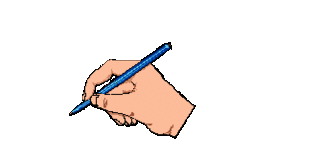A candid profile of the elite target market
Money. Why is so much of it concentrated in the hands of a few? Why should the thoughts, ideals and aspirations of many impoverished and disavantaged Filipinos be ultimately subsumed to the will and tastes of an elite few? Specifically, why should the globalized comics of the elite hold a place in the near barren cultural landscape of our country?
In a 2004 Human Development Survey Report cited in the February 7-17, 2005 issue of BizNews Asia, a Philippine news weekly magazine, particularly in the article "The Philippines muddles through mediocrity" by Antonio S. Lopez, it was found that the richest 20% of Filipinos have taken in 52.3%, or a little more than half of the country's wealth.This means that the richest 20% are making nearly ten times more than the poorest 20% who only took in 5.4% of the national income. This isn't normal.
In Norway, the world's best country, the richest 20% of Norwegians shared only 37.2% of the national income, while the poorest 20% only 9.6%. In short, the richest Norwegians make just sx times the income of the poorest. The richest Filipinos however, make 2.2. times more income than the richest Norwegians, yet the Philippines is so disgustingly poor. The same scenario is present when we look at how much the rich share in the nation's wealth of other developed nations such as the United States, Canada and Hong Kong. A country is poor when its rich few get more of the national income than its poorest. But how do the richest of the rich, the elite of the elite, do it? Did they earn all that money through honesty, fairplay and hard work?
Don't kid yourself.
Illegal gambling. Election rigging. Bribery. Money laundering. Tax evasion. Smuggling. Intellectual piracy. Land grabbing. Drug trafficking. Illegal logging. Securities manipulation. Cult worship. Graft and corruption. Monopolies. Duopolies. Oligarchies. Prostitution. And a host of other rackets so ingenuous, so innovative in conception and execution that no term has yet been coined to describe them. We read and find out all about these shenanigans in the t.v., radio, newspapers, books and the internet. We discuss them amongst ourselves in private, shaking our heads in mixed disbelief, admiration, and disgust.
The elite. That's how most of the nation's wealth is concentrated in the hands of a few. This is why the richest 20% are taking nearly ten times more than the poorest 20% of the nation's wealth. Its a glossy, depraved world where black is white and white is black. The moral problem. The real world of the richest of the rich. A segment, a significant segment, of the target class A demographic with high purchasing power.
It is significant because the warped morals and values of the richest 20% are emulated by other segments of the class A demographic who are dependent on the former for income. This soon trickles down to the reduced middle and mass-based lower demographics developing into the country's moral problem writ large.
But seeing how the elite's twisted morals betray also their lack of national pride and concern for the common man, it follows that they, and the other minds they have infected, have no real and honest appreciation for our country's language, history, heroes, achievements, stories, music...generally our country's heritage and culture.
Surveying the ruin the elite have caused, they are embarrassed by what they see and have the gall to call our culture and entertainment as hopeless, deficient, impoverished and backward. They turn their backs and pine for the more "refined" cultures of other countries praising their language, their hisotry, achievements, music, arts, and yes, even their comicbooks. This, they tell us, is what we should aspire for.

0 Comments:
Post a Comment
<< Home